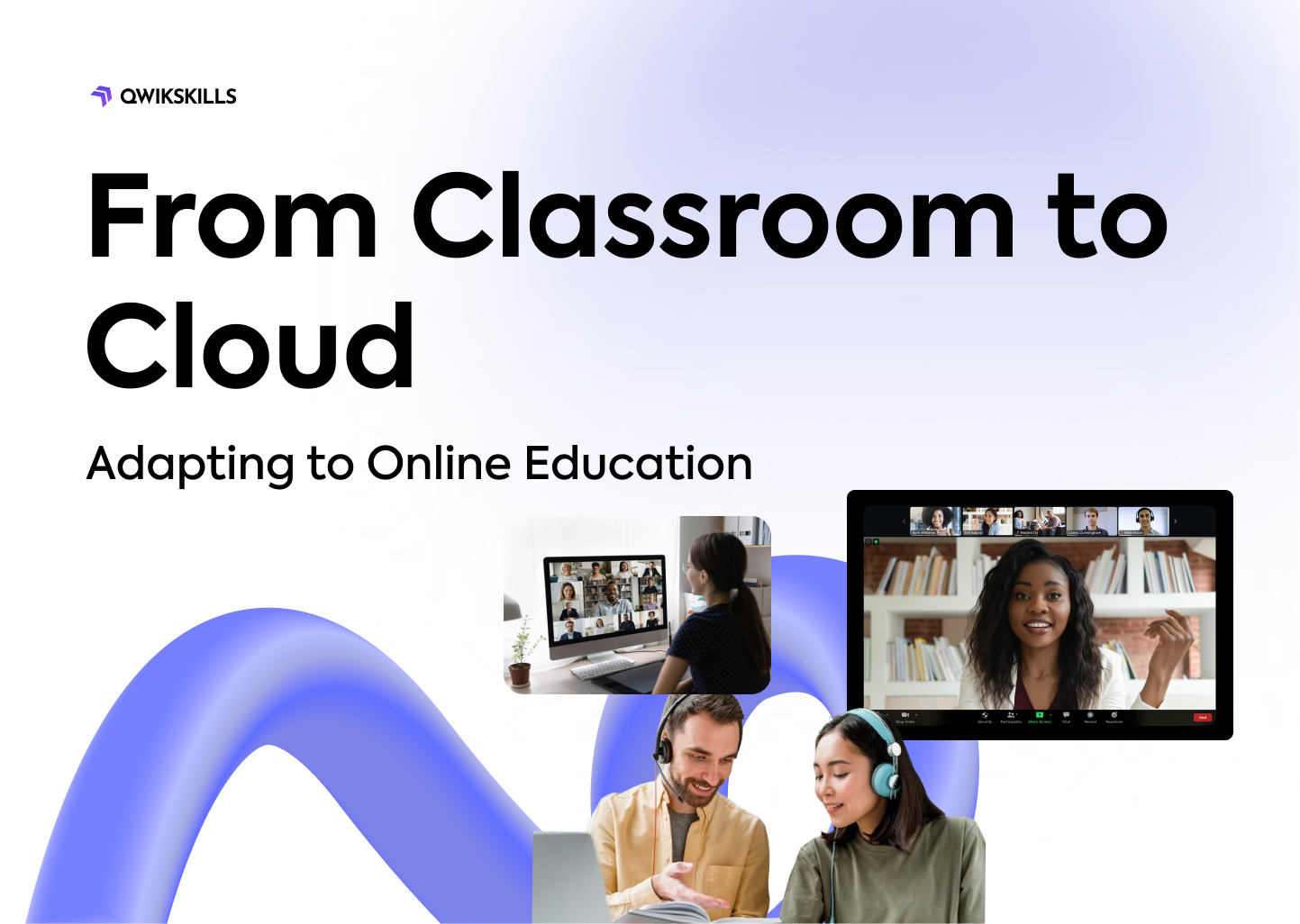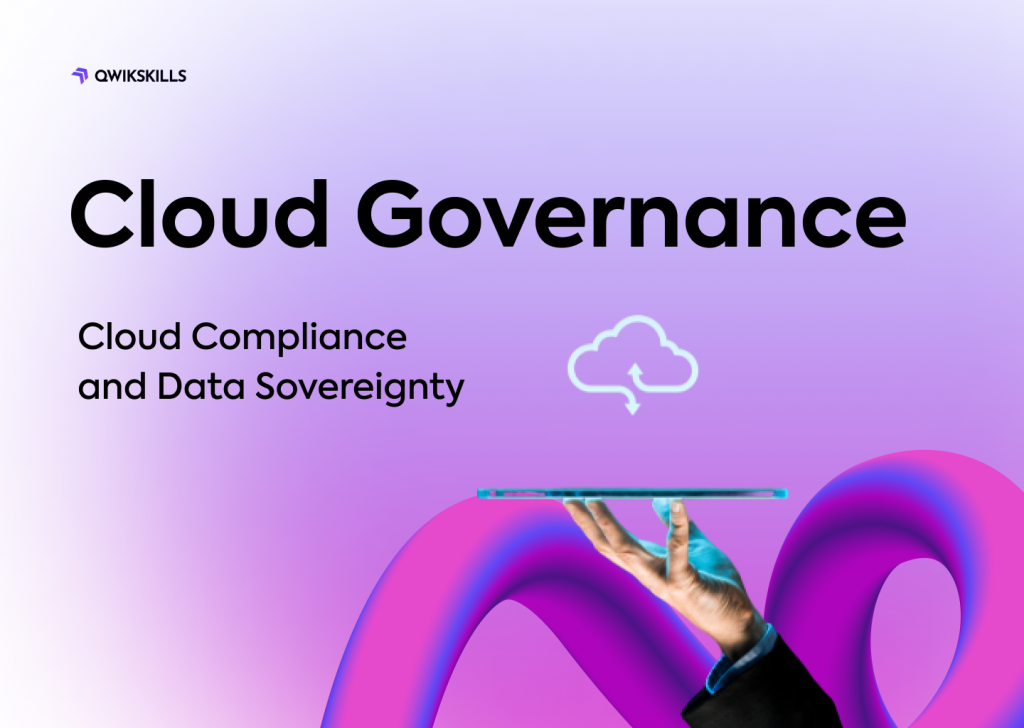In the fast-evolving landscape of education, the paradigm shift from traditional classrooms to cloud learning has been nothing short of revolutionary. The advent of Educational Technology (EdTech) has played a pivotal role in this transformation, bringing about a dynamic shift from physical textbooks to virtual classrooms.
In this blog post, we will explore the rise of EdTech, the impact of cloud-based learning, and how platforms like QwikSkills are shaping the future of education.
Introduction
As technology continues to reshape our world, it has inevitably permeated the realm of education. The term “Cloud” has transcended its meteorological origins to become synonymous with a digital ecosystem where data, applications, and educational resources coexist. This shift from traditional classroom settings to cloud-based learning has been accelerated by the rise of EdTech.
The Rise of EdTech: A Paradigm Shift
EdTech, the union of digital resources with learning, transforms conventional classrooms into dynamic, interactive experiences. Its many benefits include improved accessibility and heightened student engagement.
These platforms are pivotal in making learning accessible in the cloud-based education era, allow students to learn from anywhere with internet. This flexibility is especially helpful for those managing work, family, or other responsibilities.
Benefits of Online Education
The rise of online education is reshaping the way we learn, offering numerous significant advantages over the traditional classroom model.
- Flexibility in Scheduling and Location: Learn at your own pace, fitting studies into your schedule. Ideal for those managing work or family commitments.
- Access to a Wide Variety of Courses: Explore diverse subjects not readily available locally, catering to varied interests and professional development needs.
- Individualized Learning Experience: Learn at your pace with multimedia resources and real-time feedback for a tailored and engaging learning experience.
Navigating the Cloud: How EdTech Transforms Learning
Central to the evolution of education is the adoption of cloud-based learning platforms. These platforms provide a virtual space where students and educators can interact, access resources, and collaborate seamlessly. The cloud offers several transformative features for education:
- Access Anytime, Anywhere: Facilitates uninterrupted learning by allowing students to access educational materials at their convenience.
- Real-World Applications: Integrates hands-on projects, enabling students to apply theoretical knowledge to real-world scenarios.
- Collaboration Beyond Boundaries: Fosters global collaboration among students and educators, enhancing the learning experience.
Challenges in the Cloud-Driven Educational Landscape
While the benefits of cloud-based education are evident, challenges persist. Concerns related to data security, the digital divide, and the need for effective student-teacher interaction require thoughtful consideration.
- Lack of Face-to-Face Interaction: Virtual classes lack the richness of physical discussions, posing challenges for community building and motivation.
- Technical Issues and Learning Curve: Online learning requires technical skills and reliable internet, creating barriers for some students.
- Self-Discipline and Time Management: Effective time management and self-discipline are crucial for a successful transition to online learning.
Tools for Effective Online Learning
The shift to online education requires various tools for effective learning, including Learning Management Systems, video conferencing tools, and collaboration tools.
- Learning Management Systems: The LMS serves as the backbone of online education. It is the equivalent of your physical classroom where course materials are uploaded, assignments are submitted, and feedback is received.
- Video Conferencing Tools: To re-create the interactive atmosphere of a physical classroom, video conferencing tools are paramount. Platforms like Zoom, Microsoft Teams, or Google Meet enable you as a student to engage, ask questions, and actively participate in classes just as you would in an in-person lecture.
- Collaboration Tools: Working in groups isn’t limited to the physical location anymore. Online learning harnesses the power of cloud computing to facilitate group work. Tools like Google Drive for document sharing, Trello for project management, or Slack for team communication can help manage and streamline your group projects effectively.
Tips for a successful transition to online learning
The shift to online education does not have to be daunting. Here are some affirmations to guide you:
- Be open to exploring and using technology.
- Maintain regular communication.
- Balance online and offline activities.
- Stay organized with a structured schedule.
FAQ Section: Common Queries About Cloud-Based Learning
- How secure is cloud-based education? Cloud-based education employs robust encryption and security protocols, ensuring the protection of student data.
- Can online education be as effective as traditional classrooms? Yes, online education, especially when facilitated through EdTech platforms, has proven to be equally, if not more, effective due to personalized learning and real-world applications.
- What devices are compatible with cloud-based learning platforms? Cloud-based learning platforms are designed to be compatible with a wide range of devices, including laptops, tablets, and smartphones.
- How do students collaborate in a virtual learning environment? Collaboration in a virtual setting is facilitated through features like discussion forums, group projects, and real-time communication tools.
- Is there personalized support for students in online education? Yes, online education platforms often provide personalized support through features like chat support, forums, and even one-on-one virtual sessions.
- How do teachers assess students in a virtual setting? Assessment in a virtual setting is conducted through various online tools and methods, ensuring fair and effective evaluation.
- What happens if there’s an internet outage during an online class? Strategies for handling technical glitches, such as recording lectures or providing alternative resources, are in place to mitigate the impact of internet outages.
- Can parents monitor their child’s progress in online education? Yes, many platforms offer parent portals and progress tracking features, allowing parents to stay informed about their child’s academic journey.
- Are cloud-based courses recognized by employers? Yes, certifications from reputable cloud-based learning platforms are widely recognized by employers globally.
- How does QwikSkills contribute to cloud-based education? QwikSkills is at the forefront of providing hands-on cloud-based courses, preparing learners for the demands of the modern workplace.
Conclusion
Cloud has been a game-changer in online education. The cloud facilitates efficient storage, accessibility, and sharing of learning materials – all with a few clicks. Students and educators can tap into the endless resources available online, making learning more interactive and engaging.
Embracing the Future with QwikSkills
As we navigate the ever-changing landscape of education, embracing the potential of cloud-based learning becomes paramount. QwikSkills, a leading platform in the realm of EdTech, offers a diverse array of courses designed to empower learners for the challenges of the future.
By combining hands-on projects, expert-led courses, and industry-recognized certifications, QwikSkills stands as a testament to the evolution of education in the digital age.
Explore QwikSkills today and unlock a world of hands-on learning, expert-led courses, and industry-recognized certifications. Your future starts here!




